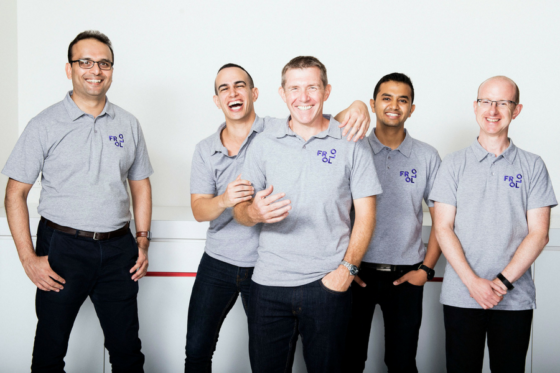Overcoming Digital Barriers: Addressing Widespread Skills Gaps in AI Adoption
Bridging Australia’s AI Skills Gap
As artificial intelligence (AI) drives transformative growth, a pervasive shortage of skilled talent is hindering its adoption—especially among small and medium-sized enterprises (SMEs) and public sector organizations. In Australia, nearly 150,000 businesses struggle with digital skills, particularly in AI and cybersecurity. These deficiencies not only obstruct technology integration but also result in lost revenue opportunities and an increased risk from cyberattacks, which are expected to cost the nation an estimated $63 billion in 2024.
In regions like South Australia, the tech talent pool is projected to more than double—from roughly 40,800 professionals to an estimated 89,400 by 2035. Closing these skills gaps isn’t just about safeguarding technology; it could also unlock a potential $25 billion boost for the economy through enhanced productivity and reduced cyber risks.
Strategies to Conquer the Talent Shortage
Both public entities and SMEs face significant hurdles. Half of public sector agencies report inadequate digital literacy, and three-quarters experience shortages in cybersecurity expertise. At the same time, 83% of small ICT businesses are venturing into AI despite lacking sufficient coding and data analysis skills. To counter these challenges, organizations must embrace innovative solutions through strategic partnerships, focused training investments, and more flexible hiring methods.
1. Partnerships: Collaborating for Collective Strength
Collaborative ventures among academia, industry, and government can significantly bridge the AI skills divide. Governments in OECD countries are already nurturing environments where train‐the‐trainer programs empower educators and mentors to disseminate AI expertise widely. For SMEs lacking in-house resources, alliances with larger tech firms or established platforms can provide critical access to specialized knowledge and tools.
In Australia, the Australian Computer Society (ACS) works closely with universities and employers to revamp ICT programs and prioritize high-demand areas like AI and cybersecurity. Similar frameworks exist abroad—such as Austria’s "Digital Everywhere" initiative, which delivers basic AI literacy for public sector workers—demonstrating the power of partnerships to spread costs, promote inclusivity, and foster a diverse talent pool.
| Partnership Type | Benefits for SMEs/Public Sectors | Examples |
|---|---|---|
| Academia-Industry | Aligns educational programs with real-world needs, offers internships and expert lectures | NVIDIA/Microsoft collaborations; ACS university accreditations |
| Public-Private | Shares costs and resources while tapping into government incentives | EU AI Skills Alliance; Australian fee-free TAFE programs |
| Cross-Sector Coalitions | Builds comprehensive AI literacy and addresses ethical concerns | OECD train-the-trainer models; initiatives like Girls Who Code |
2. Investment in Training: Upskilling for an AI-Driven Future
Robust, targeted training is central to achieving widespread AI adoption. Surveys reveal that 77% of tech professionals and 51% of workers from other sectors identify critical gaps in skills related to data analysis and machine learning. Regular “digital skills health checks” can help organizations pinpoint these deficiencies and allocate training resources effectively.
SMEs can leverage online learning platforms such as Coursera and Udemy, which offer flexible microlearning modules on topics like AI ethics and machine learning. Meanwhile, public agencies can take advantage of government-supported initiatives, including Poland’s AI Tech project or Singapore’s SkillsFuture credits, ensuring that upskilling remains accessible and adaptable to all workers.
3. Alternative Hiring Channels: Diversifying Talent Recruitment
Conventional hiring practices—often rigid in their requirement for university degrees—can exacerbate the talent shortage. In Australia, while 88% of tech hiring executives favor candidates with university credentials, many acknowledge that vocational and technical education (VET) can offer more immediate, practical skills. Emphasizing apprenticeships, industry certifications, and “earn while you learn” models can diversify the talent pool and create new opportunities for underrepresented groups.
AI tools are also streamlining recruitment by scanning and matching the right skills to job requirements. Meanwhile, embracing international talent and options like outsourcing or freelancing can help both SMEs and public entities secure specialized expertise without the need for full-time hires.
By integrating these forward-thinking strategies, Australian SMEs and the public sector can not only tackle current skills shortages but also build a resilient foundation for future AI-driven innovation. Aligning these efforts with frameworks like the National Skills Taxonomy will ensure that the nation fully capitalizes on the economic and technological potential of AI.
Related posts
-
Fintech Startup “Frollo” Launches Net Worth Tracker With Funding From Metlife to Help Low To Mid-Income Australians Improve Their Financial Wellbeing
Frollo is a FinTech startup with a mission to help people feel good about money. Founded in 2015, the company offers open banking solutions, a consumer app, and a SaaS Integration Platform to a range of financial institutions, including neobanks, traditional banks, fintech, lenders, and employers. At its core, Frollo...
-
Navigating the Australian Job Market: A Strategic Guide to Landing Your Dream Role
Navigating the Australian Job Market: Your Strategic Guide to Securing the Ideal RoleBreaking into Australia’s vibrant job market in today’s competitive landscape demands more than submitting standard applications. It requires a smart, tailored approach that speaks directly to recruiters and hiring managers.Essential Strategies for Career Success1. Optimize for ATSCustomize your...
-
Careers in Australia: Navigating the AI-Driven Job Market
Thriving in Australia’s AI-Influenced Job MarketIn today’s competitive environment, making an impact in Australia’s job market demands more than traditional methods. Here’s how you can strategically position yourself for success:1. Optimize for Applicant Tracking Systems (ATS)As modern recruitment heavily relies on ATS, ensure your resume:Uses standard, easy-to-read fontsIncorporates relevant keywords...
candidates
consultants
service
you
Ready to transform your workforce with top talent?
We start with a thorough discussion of your business needs to ensure our search is perfectly tailored.
Each recruitment strategy is crafted to find the right fit for your specific requirements.
Our review ensures your resume meets professional and industry standards.
We don’t just find candidates; we ensure they are perfectly aligned with your expectations and business culture, supporting seamless integration and long-term success.



